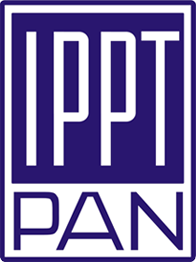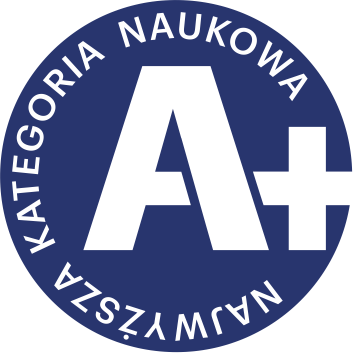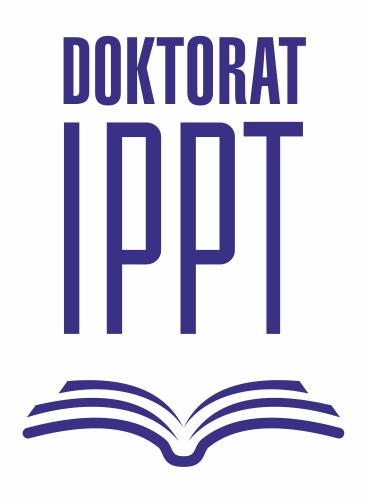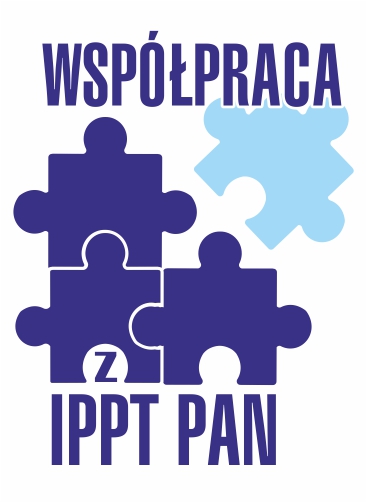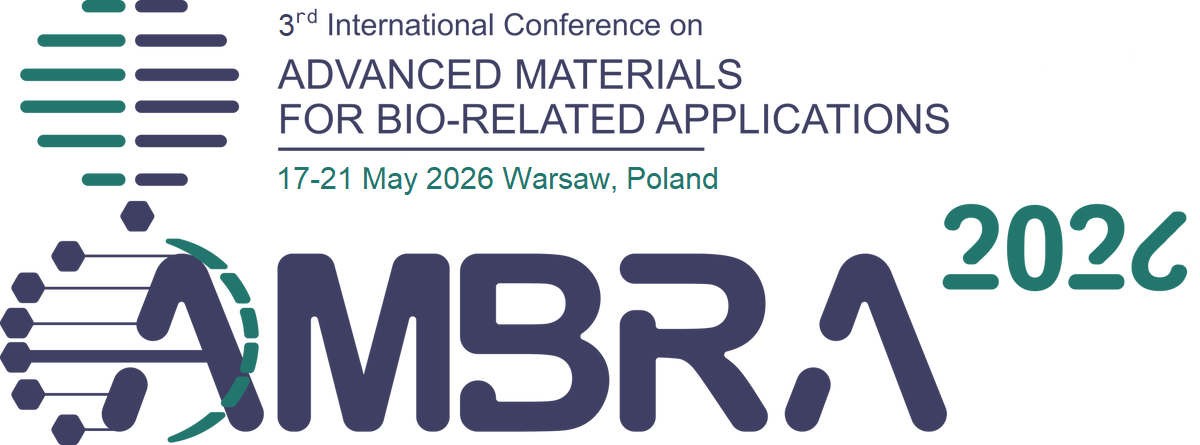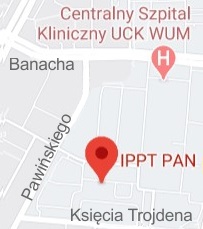| 1. |
Moczulska-Heljak M., Heljak M.♦, Sajkiewicz P. Ł., Kołbuk-Konieczny D., Unraveling hierarchically ordered melt electro-written tissue engineering scaffolds: Morphological and mechanical insights,
POLYMER, ISSN: 0032-3861, DOI: 10.1016/j.polymer.2024.127717, Vol.313, pp.127717-1-9, 2024 Streszczenie:
Addressing critical tissue defects treatment remains a pressing challenge in medicine and bioengineering. Tissue engineering (TE) scaffolds, characterized by porous architectures suitable to cell growth, is a pivotal solution. Recent advances in additive techniques have revolutionized scaffold fabrication, enabling precise control over complex porous structures. This study conducts a comprehensive analysis of hierarchically ordered melt electrospun written (MEW) TE scaffolds, elucidating the relationships between fabrication parameters and their morphological and mechanical properties. Leveraging the phenomenon of melt jet deposit buckling, characteristic hierarchically ordered porous architectures were attained. The study explores the fabrication potential of hierarchically ordered porous MEW architectures across varied voltages, feed rates, and needle sizes. Morphometric parameters, including percent porosity, density of fiber intersections, and fiber diameter, were identified. It was revealed that for feed rates exceeding 20 mm/s, resultant fiber diameters were unaffected by voltage. However, increasing voltage leads to noticeable reduction of mesh stiffness due to the coiled fibers presence. Exceptions occur at the feed rate of 20 mm/s and for needle G24, where stiffness surpasses those of regular primary pattern, which could be attributed to increased number of fiber interconnections. Słowa kluczowe:
MEW, Hierarchically ordered meshes, Coiled architectures, Entangled meshes Afiliacje autorów:
| Moczulska-Heljak M. | - | IPPT PAN | | Heljak M. | - | Politechnika Warszawska (PL) | | Sajkiewicz P. Ł. | - | IPPT PAN | | Kołbuk-Konieczny D. | - | IPPT PAN |
|  | 100p. |
| 2. |
Rinoldi C., Kijeńska-Gawrońska E.♦, Heljak M.♦, Jaroszewicz J.♦, Kamiński A.♦, Khademhosseini A.♦, Tamayol A.♦, Swieszkowski W.♦, Mesoporous Particle Embedded Nanofibrous Scaffolds Sustain Biological Factors for Tendon Tissue Engineering,
ACS Materials Au, ISSN: 2694-2461, DOI: 10.1021/acsmaterialsau.3c00012, Vol.3, No.6, pp.636-645, 2023 |  | 20p. |
| 3. |
Kowiorski K.♦, Heljak M.♦, Strojny-Nędza A.♦, Bucholc B., Chmielewski M.♦, Djas M.♦, Kaszyca K.♦, Zybała R.♦, Małek M.♦, Swieszkowski W.♦, Chlanda A.♦, Compositing graphene oxide with carbon fibers enables improved dynamical thermomechanical behavior of papers produced at a large scale,
, DOI: 10.1016/j.carbon.2023.02.009, Vol.206, pp.26-36, 2023 Streszczenie:
This article discusses the morphology and thermomechanical properties of graphene oxide (GO) paper sheets and GO paper composites reinforced with carbon fibers. GO paper was fabricated using GO paste obtained by the condensation of GO aqueous solution synthesized using the Hummers' method. Carbon fibers were implemented to improve the mechanical properties of the pristine GO paper. All the investigated papers were subjected to thermal treatment to check thermo-related morphological and mechanical properties. The results presented in this study allowed for the deeper insight into morphological, structural, and mechanical volume and surface-related properties of pristine GO and GO-based composite materials reinforced with carbon fibers. We showed that there are two important factors that should be taken into consideration for the design and fabrication of GO-based papers. These factors were the concentration of the reinforcing agent and the thermal reduction of the papers. Both factors have influenced the final properties of the resulting GO-based papers. For the first time, it was revealed how the addition of the reinforcing material affects the GO paper thermal expansion coefficient. Słowa kluczowe:
Flake graphene, Graphene oxide, Graphene oxide paper, Carbon fibers, Mechanical properties Afiliacje autorów:
| Kowiorski K. | - | inna afiliacja | | Heljak M. | - | Politechnika Warszawska (PL) | | Strojny-Nędza A. | - | Institute of Electronic Materials Technology (PL) | | Bucholc B. | - | IPPT PAN | | Chmielewski M. | - | Institute of Electronic Materials Technology (PL) | | Djas M. | - | inna afiliacja | | Kaszyca K. | - | Lukasiewicz Institute of Microelectronics and Photonics (PL) | | Zybała R. | - | Politechnika Warszawska (PL) | | Małek M. | - | inna afiliacja | | Swieszkowski W. | - | inna afiliacja | | Chlanda A. | - | Politechnika Warszawska (PL) |
|  |
| 4. |
Kołbuk D., Heljak M.♦, Choińska E.♦, Urbanek O., Novel 3D hybrid nanofiber scaffolds for bone regeneration,
Polymers, ISSN: 2073-4360, DOI: 10.3390/polym12030544, Vol.12, No.3, pp.544-1-18, 2020 Streszczenie:
Development of hybrid scaffolds and their formation methods occupies an important place in tissue engineering. In this paper, a novel method of 3D hybrid scaffold formation is presented as well as an explanation of the differences in scaffold properties, which were a consequence of different crosslinking mechanisms. Scaffolds were formed from 3D freeze-dried gelatin and electrospun poly(lactide-co-glicolide) (PLGA) fibers in a ratio of 1:1 w/w. In order to enhance osteoblast proliferation, the fibers were coated with hydroxyapatite nanoparticles (HAp) using sonochemical processing. All scaffolds were crosslinked using an EDC/NHS solution. The scaffolds' morphology was imaged using scanning electron microscopy (SEM). The chemical composition of the scaffolds was analyzed using several methods. Water absorption and mass loss investigations proved a higher crosslinking degree of the hybrid scaffolds than a pure gelatin scaffold, caused by additional interactions between gelatin, PLGA, and HAp. Additionally, mechanical properties of the 3D hybrid scaffolds were higher than traditional hydrogels. In vitro studies revealed that fibroblasts and osteoblasts proliferated and migrated well on the 3D hybrid scaffolds, and also penetrated their structure during the seven days of the experiment. Słowa kluczowe:
hybrid scaffolds, electrospinning, freeze-drying, gelatin, hydroxyapatite, sonochemical covering/grafting Afiliacje autorów:
| Kołbuk D. | - | IPPT PAN | | Heljak M. | - | Politechnika Warszawska (PL) | | Choińska E. | - | Politechnika Warszawska (PL) | | Urbanek O. | - | IPPT PAN |
|  | 100p. |
| 5. |
Kosik-Kozioł A.♦, Heljak M.♦, Święszkowski W.♦, Mechanical properties of hybrid triphasic scaffolds for osteochondral tissue engineering,
Materials Letters, ISSN: 0167-577X, DOI: 10.1016/j.matlet.2019.126893, Vol.261, pp.126893-1-5, 2020 Streszczenie:
Reproducing the advanced complexity of native tissue by means of the 3D multi-functional construct is a promising tissue engineering approach to osteochondral tissue regeneration. In this study, we present a porous 3D construct composed of three zones responsible for the regeneration of non-calcified cartilage, calcified cartilage and subchondral bone. These three zones of the hybrid were composed of modified biopolymers: (i) alginate (Alg) reinforced by short polylactide (PLA) fibres, (ii) alginate and gelatine methacrylate (GelMA) combined with ß-tricalcium phosphate particles (TCP), (iii) 3D printed polycaprolactone scaffold subsequently modified with the use of an innovative solvent treatment method based on acetone and ultrasound stimulation, respectively. Combining the advanced deposition systems based on: (i) 3D printing coupled with a spray crosslinking system, (ii) an innovative deposition system based on a coaxial-needle extruder, (iii) fused deposition modelling (FDM) connected with post-fabrication treatment, allows us to fabricate the triphasic construct that emulates the structure and properties of the native osteochondral tissue. The aim of the study was to investigate the mechanical properties of the fabricated hybrid and its individual zones. Our results demonstrate the load-bearing capabilities of TC, but nevertheless it should be implanted below the surface line of host cartilage to protect it from strong stresses, at the same time allowing native host tissues to grow into it. Słowa kluczowe:
Triphasic scaffold, Osteochondral tissue engineering, Mechanical properties, Hydrogel with nanofillers, Modified PCL Afiliacje autorów:
| Kosik-Kozioł A. | - | inna afiliacja | | Heljak M. | - | Politechnika Warszawska (PL) | | Święszkowski W. | - | inna afiliacja |
|  |
| 6. |
Kosik-Kozioł A.♦, Costantini M.♦, Mróz A.♦, Idaszek J.♦, Heljak M.♦, Jaroszewicz J.♦, Kijeńska E.♦, Szöke K.♦, Frerker N.♦, Barbetta A.♦, Brinchmann J.E.♦, Święszkowski W.♦, 3D bioprinted hydrogel model incorporating β-tricalcium phosphate for calcified cartilage tissue engineering,
Biofabrication, ISSN: 1758-5082, DOI: 10.1088/1758-5090/ab15cb, Vol.11, No.3, pp.035016-1-29, 2019 Streszczenie:
One promising strategy to reconstruct osteochondral defects relies on 3D bioprinted three-zonal structures comprised of hyaline cartilage, calcified cartilage, and subchondral bone. So far, several studies have pursued the regeneration of either hyaline cartilage or bone in vitro while—despite its key role in the osteochondral region—only few of them have targeted the calcified layer. In this work, we present a 3D biomimetic hydrogel scaffold containing β-tricalcium phosphate (TCP) for engineering calcified cartilage through a co-axial needle system implemented in extrusion-based bioprinting process. After a thorough bioink optimization, we showed that 0.5% w/v TCP is the optimal concentration forming stable scaffolds with high shape fidelity and endowed with biological properties relevant for the development of calcified cartilage. In particular, we investigate the effect induced by ceramic nano-particles over the differentiation capacity of bioprinted bone marrow-derived human mesenchymal stem cells in hydrogel scaffolds cultured up to 21 d in chondrogenic media. To confirm the potential of the presented approach to generate a functional in vitro model of calcified cartilage tissue, we evaluated quantitatively gene expression of relevant chondrogenic (COL1, COL2, COL10A1, ACAN) and osteogenic (ALPL, BGLAP) gene markers by means of RT-qPCR and qualitatively by means of fluorescence immunocytochemistry. Słowa kluczowe:
alginate, gelatin methacrylate, ß-tricalcium phosphate TCP, bioprinting, coaxial needle, calcified cartilage Afiliacje autorów:
| Kosik-Kozioł A. | - | inna afiliacja | | Costantini M. | - | Sapienza University of Rome (IT) | | Mróz A. | - | inna afiliacja | | Idaszek J. | - | inna afiliacja | | Heljak M. | - | Politechnika Warszawska (PL) | | Jaroszewicz J. | - | inna afiliacja | | Kijeńska E. | - | inna afiliacja | | Szöke K. | - | inna afiliacja | | Frerker N. | - | inna afiliacja | | Barbetta A. | - | Sapienza University of Rome (IT) | | Brinchmann J.E. | - | inna afiliacja | | Święszkowski W. | - | inna afiliacja |
|  | 140p. |
| 7. |
Rinoldi C.♦, Costantini M.♦, Kijeńska-Gawrońska E.♦, Testa S.♦, Fornetti E.♦, Heljak M.♦, Ćwiklińska M.♦, Buda R.♦, Baldi J.♦, Cannata S.♦, Guzowski J.♦, Gargioli C.♦, Khademhosseini A.♦, Święszkowski W.♦, Tendon tissue engineering: effects of mechanical and biochemical stimulation on stem cell alignment on cell‐laden hydrogel yarns,
ADVANCED HEALTHCARE MATERIALS, ISSN: 2192-2659, DOI: 10.1002/adhm.201801218, Vol.8, No.7, pp.1801218-1-10, 2019 Streszczenie:
Fiber-based approaches hold great promise for tendon tissue engineering enabling the possibility of manufacturing aligned hydrogel filaments that can guide collagen fiber orientation, thereby providing a biomimetic micro-environment for cell attachment, orientation, migration, and proliferation. In this study, a 3D system composed of cell-laden, highly aligned hydrogel yarns is designed and obtained via wet spinning in order to reproduce the morphology and structure of tendon fascicles. A bioink composed of alginate and gelatin methacryloyl (GelMA) is optimized for spinning and loaded with human bone morrow mesenchymal stem cells (hBM-MSCs). The produced scaffolds are subjected to mechanical stretching to recapitulate the strains occurring in native tendon tissue. Stem cell differentiation is promoted by addition of bone morphogenetic protein 12 (BMP-12) in the culture medium. The aligned orientation of the fibers combined with mechanical stimulation results in highly preferential longitudinal cell orientation and demonstrates enhanced collagen type I and III expression. Additionally, the combination of biochemical and mechanical stimulations promotes the expression of specific tenogenic markers, signatures of efficient cell differentiation towards tendon. The obtained results suggest that the proposed 3D cell-laden aligned system can be used for engineering of scaffolds for tendon regeneration. Słowa kluczowe:
hydrogel fibers, static mechanical stretching, stem cell alignment, tenogenic differentiation, wet spinning Afiliacje autorów:
| Rinoldi C. | - | inna afiliacja | | Costantini M. | - | Sapienza University of Rome (IT) | | Kijeńska-Gawrońska E. | - | Politechnika Warszawska (PL) | | Testa S. | - | Tor Vergata Rome University (IT) | | Fornetti E. | - | Tor Vergata Rome University (IT) | | Heljak M. | - | Politechnika Warszawska (PL) | | Ćwiklińska M. | - | Institute of Physical Chemistry, Polish Academy of Sciences (PL) | | Buda R. | - | Institute of Physical Chemistry, Polish Academy of Sciences (PL) | | Baldi J. | - | Tor Vergata Rome University (IT) | | Cannata S. | - | Tor Vergata Rome University (IT) | | Guzowski J. | - | Institute of Physical Chemistry, Polish Academy of Sciences (PL) | | Gargioli C. | - | Tor Vergata Rome University (IT) | | Khademhosseini A. | - | Massachusetts Institute of Technology (US) | | Święszkowski W. | - | inna afiliacja |
|  | 140p. |
| 8. |
Chlanda A.♦, Oberbek P.♦, Heljak M.♦, Górecka Ż.♦, Czarnecka K., Chen K.-S.♦, Woźniak M.J.♦, Nanohydroxyapatite adhesion to low temperature plasma modified surface of 3D-printed bone tissue engineering scaffolds - qualitative and quantitative study,
SURFACE AND COATINGS TECHNOLOGY, ISSN: 0257-8972, DOI: 10.1016/j.surfcoat.2019.07.070, Vol.375, pp.637-644, 2019 Streszczenie:
Biodegradable 3D-printed polycaprolactone scaffolds for bone tissue engineering applications have been extensively studied as they can provide an attractive porous architecture mimicking natural bone, with tunable physical and mechanical properties enhancing positive cellular response. The main drawbacks of polycaprolactone-based scaffolds, limiting their applications in tissue engineering are: their hydrophobic nature, low bioactivity and poor mechanical properties compared to native bone tissue. To overcome these issues, the surface of scaffolds is usually modified and covered with a ceramic layer. However, a detailed description of the adhesion forces of ceramic particles to the polymer surface of the scaffolds is still lacking. Our present work is focused on obtaining PCL-based composite scaffolds to strengthen the architecture of the final product. In this manuscript, we report qualitative and quantitative evaluation of low temperature plasma modification followed by detailed studies of the adhesion forces between chemically attached ceramic layer and the surface of polycaprolactone-nanohydroxyapatite composite 3D-printed scaffolds. The results suggest modification-dependent alteration of the internal structure and morphology, as well as mechanical and physical scaffold properties recorded with atomic force microscopy. Moreover, changes in the material surface were followed by enhanced adhesion forces binding the ceramic layer to polymer-based scaffolds. Słowa kluczowe:
surface modification, low temperature plasma, atomic force microscopy, bone tissue engineering Afiliacje autorów:
| Chlanda A. | - | Politechnika Warszawska (PL) | | Oberbek P. | - | Politechnika Warszawska (PL) | | Heljak M. | - | Politechnika Warszawska (PL) | | Górecka Ż. | - | Politechnika Warszawska (PL) | | Czarnecka K. | - | IPPT PAN | | Chen K.-S. | - | Tatung University (TW) | | Woźniak M.J. | - | Politechnika Warszawska (PL) |
|  | 100p. |
| 9. |
Woźniak M.♦, Chlanda A.♦, Oberbek P.♦, Heljak M.♦, Czarnecka K., Janeta M.♦, John Ł.♦, Binary bioactive glass composite scaffolds for bone tissue engineering — structure and mechanical properties in micro and nano scale. A preliminary study,
Micron, ISSN: 0968-4328, DOI: 10.1016/j.micron.2018.12.006, Vol.119, pp.64-71, 2019 Streszczenie:
Composite scaffolds of bioactive glass (SiO2-CaO) and bioresorbable polyesters: poly-L-lactic acid (PLLA) and polycaprolactone (PCL) were produced by polymer coating of porous foams. Their structure and mechanical properties were investigated in micro and nanoscale, by the means of scanning electron microscopy, PeakForce Quantitative Nanomechanical Property Mapping (PF-QNM) atomic force microscopy, micro-computed tomography and contact angle measurements. This is one of the first studies in which the nanomechanical properties (elastic modulus, adhesion) were measured and mapped simultaneously with topography imaging (PF-QNM AFM) for bioactive glass and bioactive glass – polymer coated scaffolds. Our findings show that polymer coated scaffolds had higher average roughness and lower stiffness in comparison to pure bioactive glass scaffolds. Such coating-dependent scaffold properties may promote different cells-scaffold interaction. Słowa kluczowe:
bone tissue engineering, composite scaffold, bioactive glass, mmechanical properties Afiliacje autorów:
| Woźniak M. | - | Politechnika Warszawska (PL) | | Chlanda A. | - | Politechnika Warszawska (PL) | | Oberbek P. | - | Politechnika Warszawska (PL) | | Heljak M. | - | Politechnika Warszawska (PL) | | Czarnecka K. | - | IPPT PAN | | Janeta M. | - | University of Wrocław (PL) | | John Ł. | - | University of Wrocław (PL) |
|  | 100p. |
| 10. |
Costantini M.♦, Guzowski J.♦, Żuk P.J., Mozetic P.♦, De Panfilis S.♦, Jaroszewicz J.♦, Heljak M.♦, Massimi M.♦, Pierron M.♦, Trombetta M.♦, Dentini M.♦, Święszkowski W.♦, Rainer A.♦, Garstecki P.♦, Barbetta A.♦, Electric Field Assisted Microfluidic Platform for Generation of Tailorable Porous Microbeads as Cell Carriers for Tissue Engineering,
Advanced Functional Materials, ISSN: 1616-301X, DOI: 10.1002/adfm.201800874, Vol.28, pp.1800874-1-13, 2018 Streszczenie:
Injection of cell‐laden scaffolds in the form of mesoscopic particles directly to the site of treatment is one of the most promising approaches to tissue regeneration. Here, a novel and highly efficient method is presented for preparation of porous microbeads of tailorable dimensions (in the range ≈300–1500 mm) and with a uniform and fully interconnected internal porous texture. The method starts with generation of a monodisperse oil‐in‐water emulsion inside a flow‐focusing microfluidic device. This emulsion is later broken‐up, with the use of electric field, into mesoscopic double droplets, that in turn serve as a template for the porous microbeads. By tuning the amplitude and frequency of the electric pulses, the template droplets and the resulting porous bead scaffolds are precisely produced. Furthermore, a model of pulsed electrodripping is proposed that predicts the size of the template droplets as a function of the applied voltage. To prove the potential of the porous microbeads as cell carries, they are tested with human mesenchymal stem cells and hepatic cells, with their viability and degree of microbead colonization being monitored. Finally, the presented porous microbeads are benchmarked against conventional microparticles with nonhomogenous internal texture, revealing their superior performance. Afiliacje autorów:
| Costantini M. | - | Sapienza University of Rome (IT) | | Guzowski J. | - | Institute of Physical Chemistry, Polish Academy of Sciences (PL) | | Żuk P.J. | - | IPPT PAN | | Mozetic P. | - | Università Campus Bio-Medico di Roma (IT) | | De Panfilis S. | - | Sapienza Istituto Italiano di Tecnologia (IT) | | Jaroszewicz J. | - | inna afiliacja | | Heljak M. | - | Politechnika Warszawska (PL) | | Massimi M. | - | University of L’Aquila (IT) | | Pierron M. | - | Telecom Physique Strasbourg (FR) | | Trombetta M. | - | Università Campus Bio-Medico di Roma (IT) | | Dentini M. | - | Sapienza University of Rome (IT) | | Święszkowski W. | - | inna afiliacja | | Rainer A. | - | Università Campus Bio-Medico di Roma (IT) | | Garstecki P. | - | Institute of Physical Chemistry, Polish Academy of Sciences (PL) | | Barbetta A. | - | Sapienza University of Rome (IT) |
|  | 45p. |
| 11. |
Sajkiewicz P., Heljak M.K.♦, Gradys A., Choińska E.♦, Rumiński S.♦, Jaroszewicz T.♦, Bissenik I.♦, Święszkowski W.♦, Degradation and related changes in supermolecular structure of poly(caprolactone) in vivo conditions,
Polymer Degradation and Stability, ISSN: 0141-3910, DOI: 10.1016/j.polymdegradstab.2018.09.023, Vol.157, pp.70-79, 2018 Streszczenie:
The degradation in vivo and its effect on the supermolecular structure of poly(caprolactone) was examined. Poly(caprolactone) (PCL) samples were prepared in the form of porous scaffolds implanted into rat calvarial defects. The degradation was investigated by means of gel permeation chromatography, wide angle X-ray scattering (WAXS), scanning electron microscopy (SEM) and differential scanning calorimetry (DSC). The study showed that the observed decrease of PCL crystallinity during degradation is accompanied by reduction of crystal size and/or perfection. The observed phenomenon could be explained by the presence of the high content of the low mobile fraction of investigated polymer, consisting not only almost 50% of crystal fraction but also most probably relatively high fraction of s.c. rigid amorphous fraction (RAF). Considering the type of structure characterized by the dominance of low mobile fraction, it is expected that the degradation will mainly concern these fractions, which in turn will lead to a decrease in the degree of crystallinity as well as crystal size and/or perfection. Słowa kluczowe:
PCL degradation, In-vivo conditions, Crystallinity, Rigid amorphous fraction Afiliacje autorów:
| Sajkiewicz P. | - | IPPT PAN | | Heljak M.K. | - | Politechnika Warszawska (PL) | | Gradys A. | - | IPPT PAN | | Choińska E. | - | Politechnika Warszawska (PL) | | Rumiński S. | - | Medical University of Warsaw (PL) | | Jaroszewicz T. | - | Politechnika Warszawska (PL) | | Bissenik I. | - | Warsaw University of Life Sciences (PL) | | Święszkowski W. | - | inna afiliacja |
|  | 35p. |
| 12. |
Heljak M.K.♦, Moczulska-Heljak M.♦, Choińska E.♦, Chlanda A.♦, Kosik-Kozioł A.♦, Jaroszewicz T.♦, Jaroszewicz J.♦, Święszkowski W.♦, Micro and nanoscale characterization of poly(DL-lactic-co-glycolic acid) films subjected to the L929 cells and the cyclic mechanical load,
Micron, ISSN: 0968-4328, DOI: 10.1016/j.micron.2018.09.004, Vol.115, pp.64-72, 2018 Streszczenie:
In this paper, the effect of the presence of L929 fibroblast cells and a cyclic load application on the kinetics of the degradation of amorphous PLGA films was examined. Complex micro and nano morphological, mechanical and physico-chemical studies were performed to assess the degradation of the tested material. For this purpose, molecular weight, glass transition temperature, specimen morphology (SEM, μCT) and topography (AFM) as well as the stiffness of the material were measured. The study showed that the presence of living cells along with a mechanical load accelerates the PLGA degradation in comparison to the degradation occurring in acellular media: PBS and DMEM. The drop in molecular weight observed was accompanied by a distinct increase in the tensile modulus and surface roughness, especially in the case of the film degradation in the presence of cells. The suspected cause of the rise in stiffness during the degradation of PLGA films is a reduction in the molecular mobility of the distinctive superficial layer resulting from severe structural changes caused by the surface degradation. In conclusion, all the micro and nanoscale properties of amorphous PLGA considered in the study are sensitive to the presence of L929 cells, as well as to a cyclic load applied during the degradation process. Słowa kluczowe:
L929, aliphatic polyester, stiffness rise Afiliacje autorów:
| Heljak M.K. | - | Politechnika Warszawska (PL) | | Moczulska-Heljak M. | - | inna afiliacja | | Choińska E. | - | Politechnika Warszawska (PL) | | Chlanda A. | - | Politechnika Warszawska (PL) | | Kosik-Kozioł A. | - | inna afiliacja | | Jaroszewicz T. | - | Politechnika Warszawska (PL) | | Jaroszewicz J. | - | inna afiliacja | | Święszkowski W. | - | inna afiliacja |
|  | 30p. |












